Effects of Processing Method and Parameters on the Wall Thickness of Gas-Projectile-Assisted Injection Molding Pipes
Abstract
1. Introduction
2. Experimentation
2.1. Materials
2.2. Experimental Platform
2.3. Experimental Scheme
2.4. Characterization of Wall Thickness and Its Uniformity
2.4.1. Measurement of the Wall Thickness of Pipes
2.4.2. Characterization of Wall Thickness Uniformity
3. Results and Discussion
3.1. Effect of Processing Method on the Wall Thickness of Pipes
3.2. Effect of Processing Parameters on the Wall Thickness of G-PAIM-O Pipes
4. Conclusions
Author Contributions
Funding
Institutional Review Board Statement
Data Availability Statement
Conflicts of Interest
References
- Zhang, W.; Liu, H.; Jiang, Q.; Kuang, T.; Lai, J.; Huang, X. Formation mechanism of high-pressure water penetration induced fiber orientation in overflow water-assisted injection molded short glass fiber-reinforced polypropylene. J. Appl. Polym. Sci. 2021, 138, 50960. [Google Scholar] [CrossRef]
- Liu, X.; Pan, Y.; Zheng, G.; Liu, H.; Chen, Q.; Dong, M.; Liu, C.; Zhang, J.; Wang, N.; Wujcik, E.K.; et al. Overview of the Experimental Trends in Water-Assisted Injection Molding. Macromol. Mater. Eng. 2018, 303, 1800035. [Google Scholar] [CrossRef]
- Li, L.; Peng, Y.; Wei, W. Recent Advances on Fluid Assisted Injection MoldingTechnique. Recent Pat. Mech. Eng. 2014, 7, 82–91. [Google Scholar] [CrossRef]
- Jiang, S.F.; Lu, C.D. Review of Gas-Assisted Injection Molding Process. Adv. Mater. Res. 2009, 69–70, 645–648. [Google Scholar] [CrossRef]
- Zhang, H.; Qiao, D. Fluid-assisted injection molding technology. Shanghai Plast. 2004, 1, 21–24 + 31. [Google Scholar] [CrossRef]
- Liu, X.; Zheng, G.; Dai, K.; Jia, Z.; Li, S.; Liu, C.; Chen, J.; Shen, C.; Li, Q. Morphological comparison of isotactic polypropylene molded by water-assisted and conventional injection molding. J. Mater. Sci. 2011, 46, 7830–7838. [Google Scholar] [CrossRef]
- Liu, S.-J.; Shih, C.-C. An Experimental Study of the Water-Assisted Injection Molding of PA-6 Composites. J. Reinf. Plast. Compos. 2008, 27, 985–999. [Google Scholar] [CrossRef]
- Zhang, W.; Kuang, T.-Q.; Liu, H.-S.; Lai, J.-M.; Han, J.-K.; Jiang, Q.-S.; Wan, Z.-H. Improved process moldability and part quality of short-glass–fiber-reinforced polypropylene via overflow short-shot water-assisted injection molding. J. Polym. Eng. 2022, 42, 362–373. [Google Scholar] [CrossRef]
- Sannen, S.; Munck, M.; Puyvelde, P.V.; Keyzer, J.D. Water Penetration Behavior in Water-assisted Injection Molding (WAIM): A Study of Product Quality for Different Process and Material Parameters. Int. Polym. Process. J. Polym. Process. Soc. 2013, 27, 602–616. [Google Scholar] [CrossRef]
- Sannen, S.; Keyzer, J.D.; Puyvelde, P.V. The Influence of Melt and Process Parameters on the Quality and Occurrence of Part Defects in Water-assisted Injection Molded Tubes. Int. Polym. Process. J. Polym. Process. Soc. 2011, 26, 551–559. [Google Scholar] [CrossRef]
- Lin, K.-Y.; Liu, S.-J. Morphology of Fluid Assisted Injection Molded Polycarbonate/Polyethylene Blends. Macromol. Mater. Eng. 2010, 295, 342–350. [Google Scholar] [CrossRef]
- Yang, J.; Yu, S.; Yu, M. Study of Residual Wall Thickness and Multiobjective Optimization for Process Parameters of Water-Assisted Injection Molding. Adv. Polym. Technol. 2020, 2020, 3481752. [Google Scholar] [CrossRef]
- Park, H.-P.; Cha, B.-S.; Park, S.-B.; Choi, J.-H.; Kim, D.-H.; Rhee, B.-O.; Lee, K.-H. A Study on the Void Formation in Residual Wall Thickness of Fluid-Assisted Injection Molding Parts. Adv. Mater. Sci. Eng. 2014, 2014, 238251. [Google Scholar] [CrossRef]
- Lin, K.-Y.; Liu, S.-J. The influence of processing parameters on fingering formation in fluid-assisted injection-molded disks. Polym. Eng. Sci. 2009, 49, 2257–2263. [Google Scholar] [CrossRef]
- Pan, J.; Kuang, T.; Lai, D.; Chen, B. Improvement of Gas-assisted Injection Molds and Process Optimization for Car Door Handles. China Plast. 2017, 31, 91–96. [Google Scholar] [CrossRef]
- Zheng, T. An Investigation of Gas-Assisted Injection Molding: Effects of Process Variables on Gas Bubble Formation. Ph.D. Thesis, The Ohio State University, Columbus, OH, USA, 1994. [Google Scholar]
- Wang, X.; Geng, T.; Yan, L.; Guo, Y.; Turng, L.-S. FEM of Gas-Assisted Injection Molding Based on 3D Model. Adv. Polym. Technol. 2020, 2020, 5818606. [Google Scholar] [CrossRef]
- Turng, L.S. Development and application of CAE technology for the gas-assisted injection molding process. Adv. Polym. Technol. 1995, 14, 1–13. [Google Scholar] [CrossRef]
- Košík, M.; Bílik, J.; Polakovič, F. Mechanical Benefits of Gas Assisted Injection Moulding Application in Design of Structural Parts. Mater. Sci. Forum 2016, 862, 182–191. [Google Scholar] [CrossRef]
- Stachowiak, T.; Jaruga, T. Structure of gas-assisted injection moulded parts. J. Achiev. Mater. Manuf. Eng. 2010, 38, 139–145. [Google Scholar]
- Michaeli, W.; Jüntgen, T.; Brunswick, A. WIT—En route to series production: First industrial application of the water injection technique. Kunstst. Plast Eur. 2001, 91, 37–39. [Google Scholar]
- Knights, M. Water Injection Molding Makes Hollow Parts Faster, Lighter. Plast. Technol. 2002, 48, 41–48. [Google Scholar]
- Isao, I. Manufacture of Hollow Body. JPH04208425A, 30 July 1992. [Google Scholar]
- Eckardt, H. Making Parts Lightweight & Strong With New Technologies. Plast. Technol. 2012, 58, 30–33. [Google Scholar]
- Oliveira, D.; Mateus, A.; Carreira, P.; Simões, F.; Malça, C. Water Assisted Injection Molding for Single and Multi-branched Tubular Components. Procedia Manuf. 2017, 12, 141–149. [Google Scholar] [CrossRef]
- Hopmann, C.; Wiesel, C.; Drach, M.; Limper, A.; Facklam, M.; Schoen, M.; Breithaupt, S.; Klie, B.; Giese, U. Material Selection for Projectile Injection Technology in the Elastomer Injection Moulding Process. Kautsch. Gummi Kunstst. 2022, 75, 45–51. [Google Scholar]
- Kuang, T.; Liu, T.; Feng, Q.; Liu, W.; Liu, H.; Turng, L. Fluid-Powered Projectile-Assisted Injection Molding: Principles and Developments. Int. Polym. Process. 2020, 35, 2–15. [Google Scholar] [CrossRef]
- Hopmann, C.; Michaeli, W.; Grilndler, M.; Gronlund, O.; Neuss, A. Process development of the projectile injection technique (PIT). In Proceedings of the Annual Technical Conference of the Society of Plastics Engineers 2011, (ANTEC 2011), Boston, MA, USA, 1 May 2011; pp. 1706–1710. [Google Scholar]
- Behmenburg, C.; Hopmann, C.; Recht, U. Manufacturing of elastomeric hollow bodies using the projectile injection technique. In Proceedings of the Annual Technical Conference of the Society of Plastics Engineers 2013, (ANTEC 2013), Cincinnati, OH, USA, 22–24 April 2013; pp. 282–285. [Google Scholar]
- Hopmann, C.; Recht, U. Manufacturing of fibre-reinforced, elastomeric parts using the injection moulding process. In Proceedings of the Annual Technical Conference of the Society of Plastics Engineers 2015, (ANTEC 2015), Orlando, FL, USA, 1 March 2015; pp. 1728–1732. [Google Scholar]
- Kuang, T.; Lai, D.; Pan, J.; Liu, W.; Liu, H. Effects of Processing Method and Parameters on the Residual Wall Thickness of Water-Projectile-Assisted Injection Molding Pipes. Polym. Mater. Sci. Eng. 2018, 34, 106–111 + 118. [Google Scholar] [CrossRef]
- Kuang, T.; Feng, Q.; Liu, T.; Zhong, L.; Wang, Y.; Liu, H. Numerical Simulation on the Penetration Behavior of the Projectile during the Water Injection Stage of Water-Projectile-Assisted Injection Molding Process. Adv. Polym. Technol. 2020, 2020, 6861216. [Google Scholar] [CrossRef]
- Kuang, T.Q.; Pan, J.Y.; Feng, Q.; Liu, H.S.; Xu, B.P.; Liu, W.W.; Turng, L.S. Residual wall thickness of water-powered projectile-assisted injection molding pipes. Polym. Eng. Sci. 2018, 59, 295–303. [Google Scholar] [CrossRef]
- Libin, H.; Tangqing, K.; Jiamei, L.; Hesheng, L.; Qiang, F.; Wenwen, L. Influence of Projectile Material on Overflow Water-Projectile Assisted Injection Molding Pipes. Eng. Plast. Appl. 2021, 49, 87–102. [Google Scholar] [CrossRef]
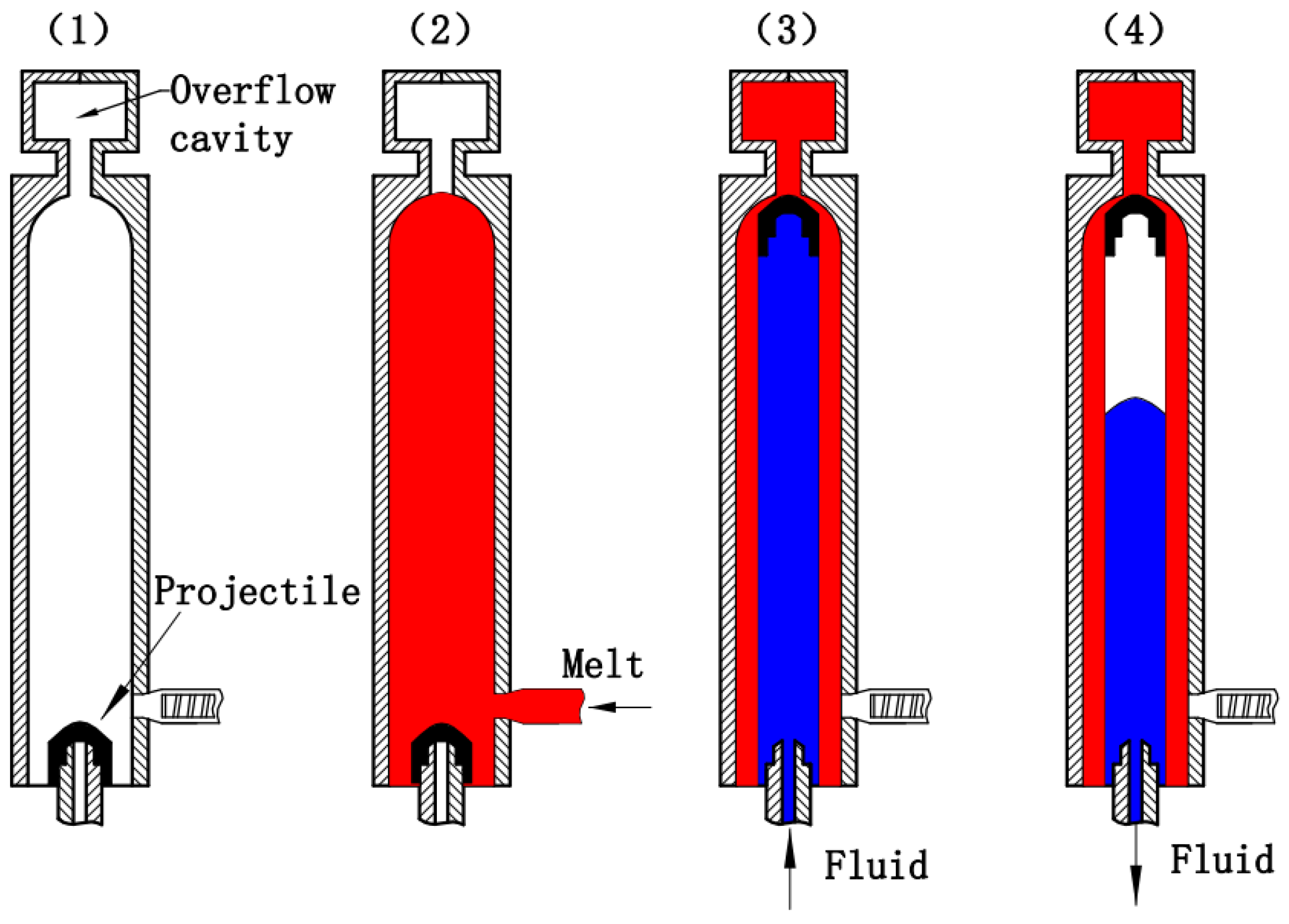
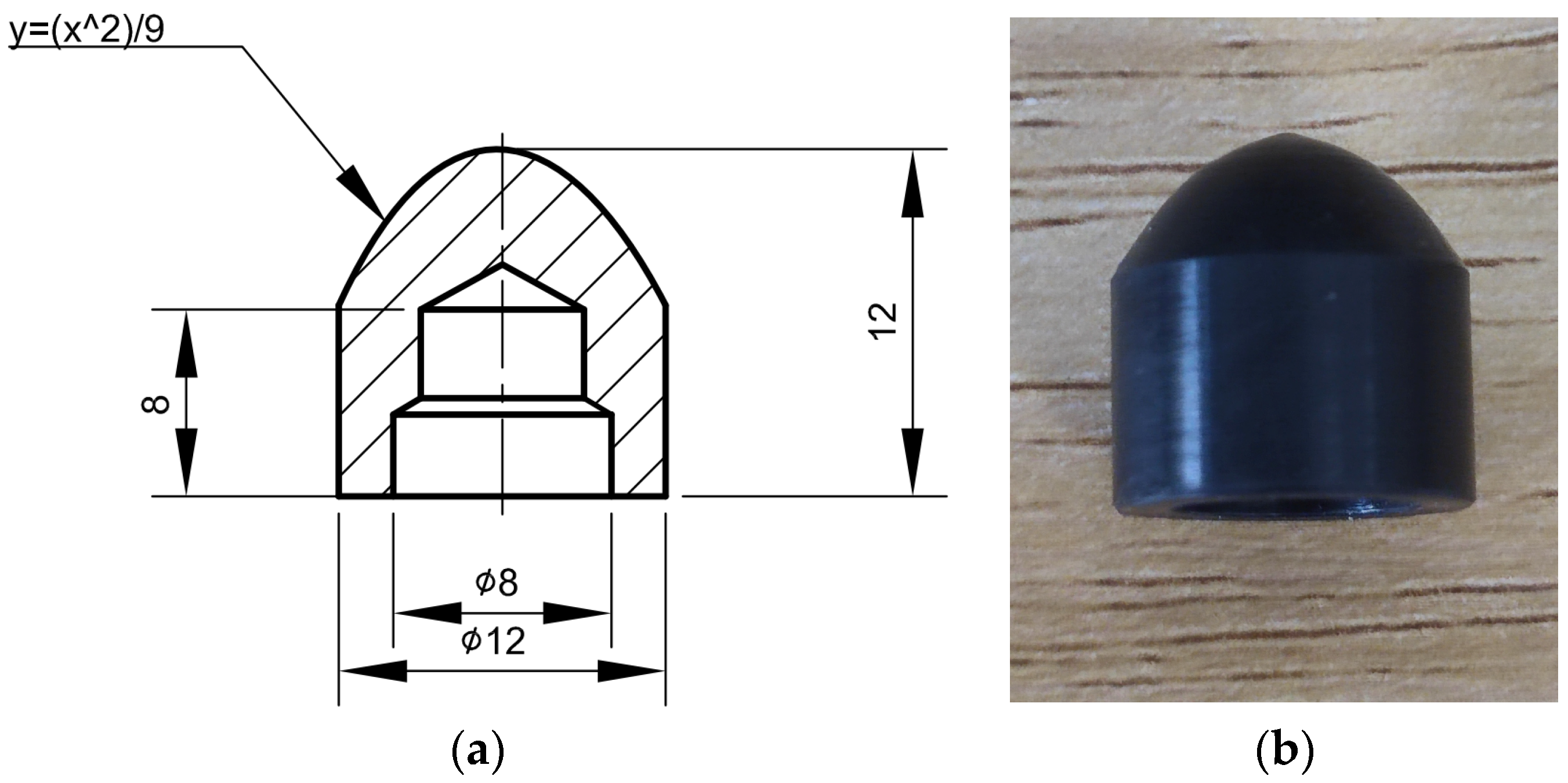

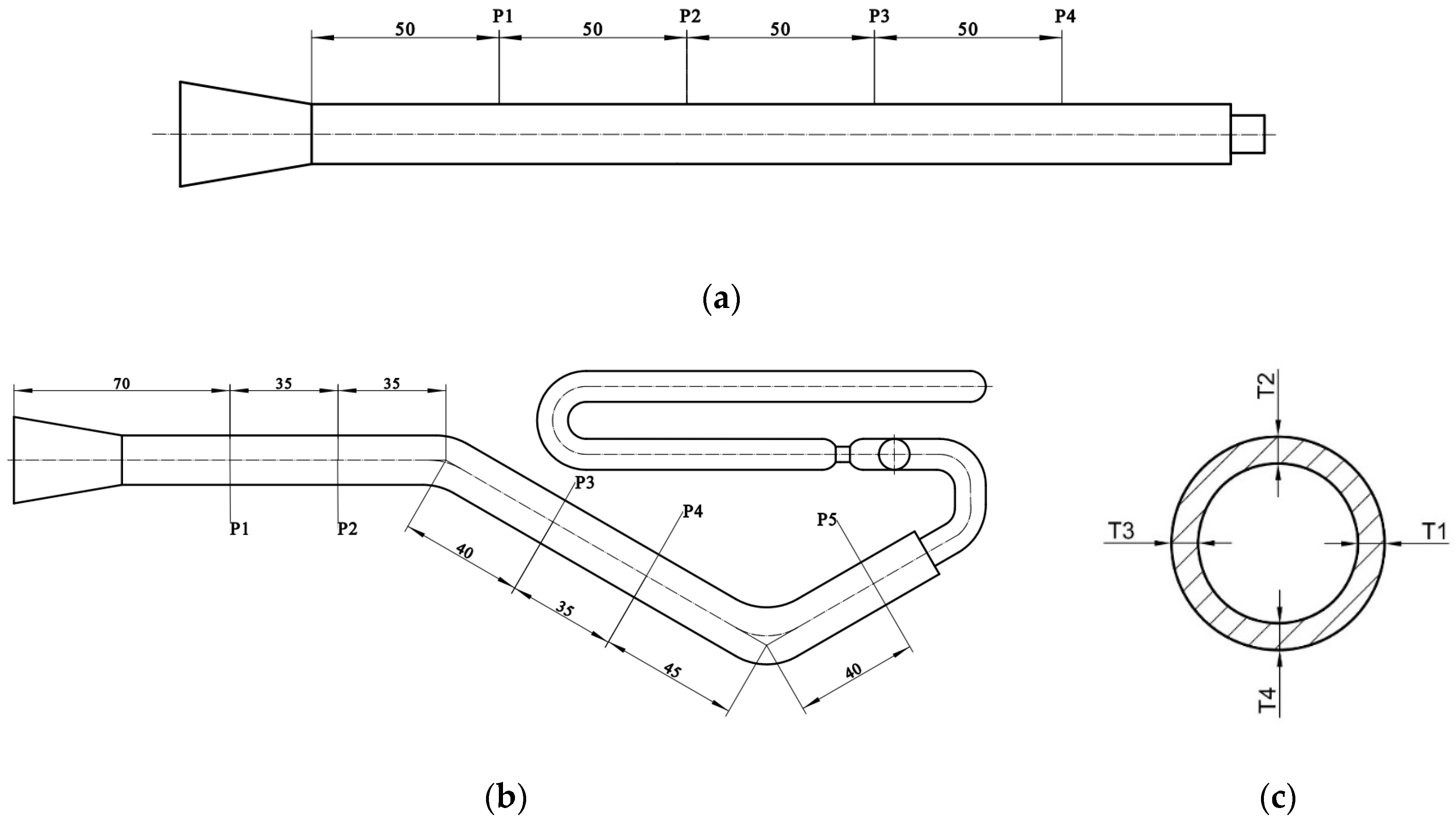
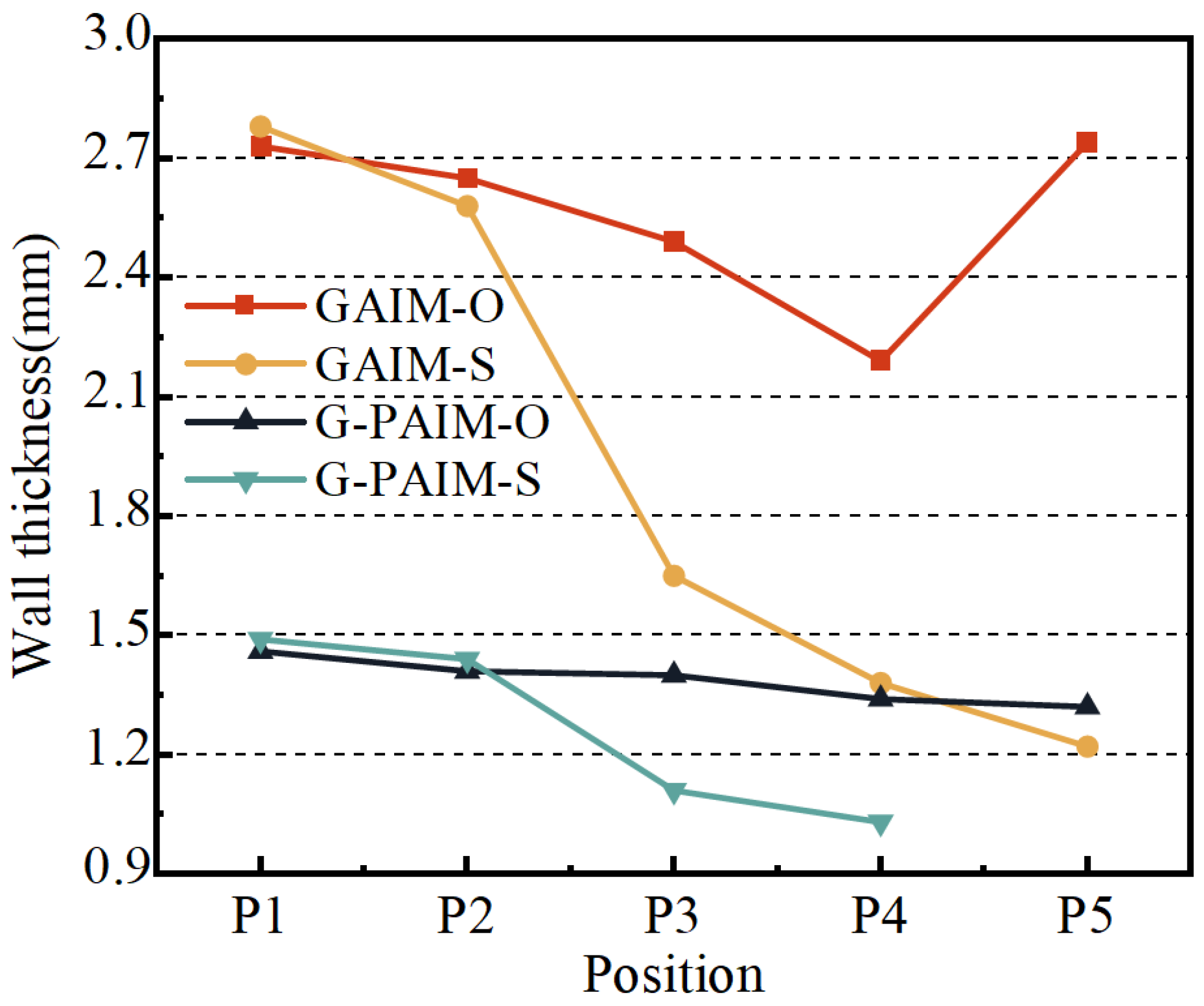
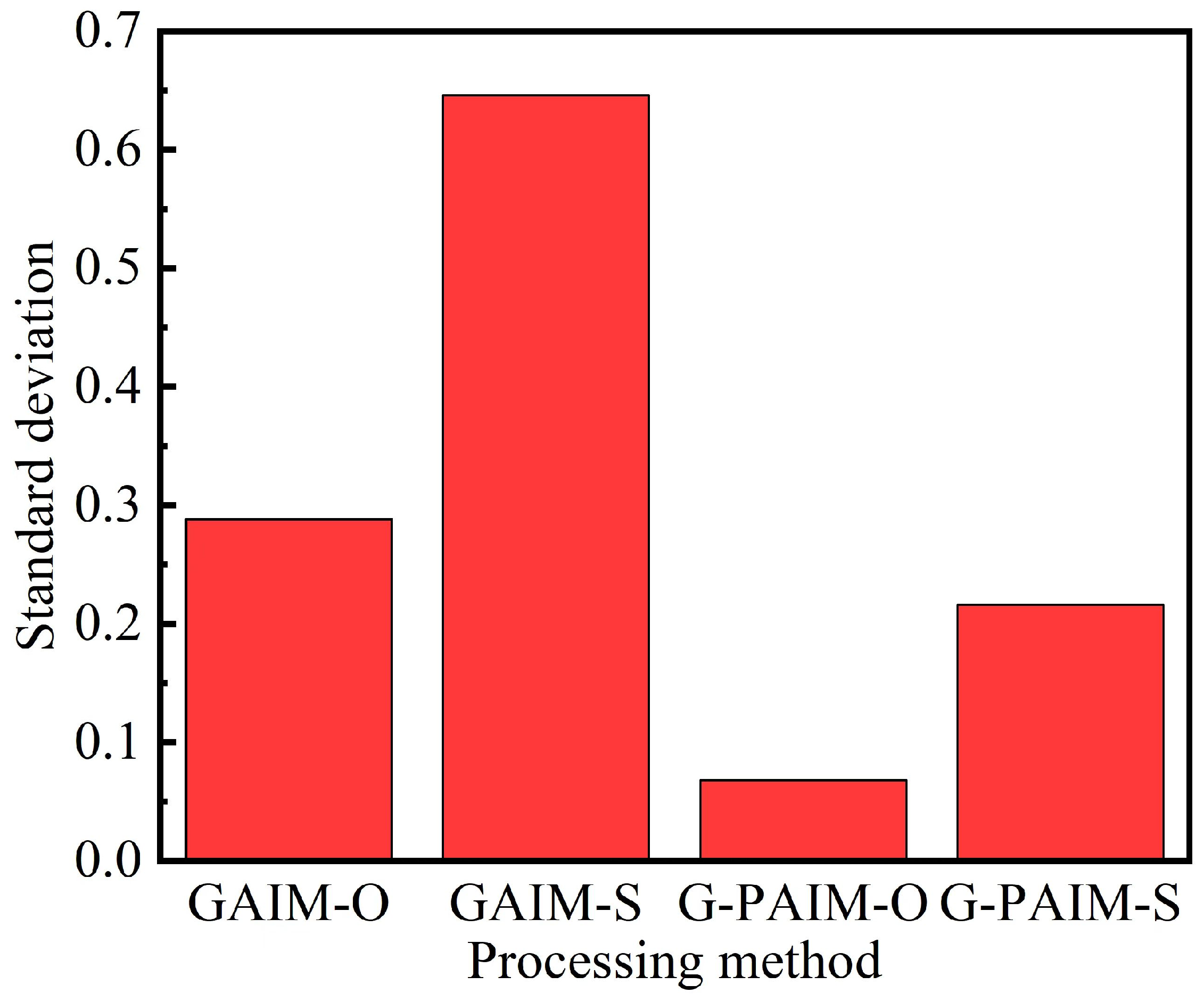

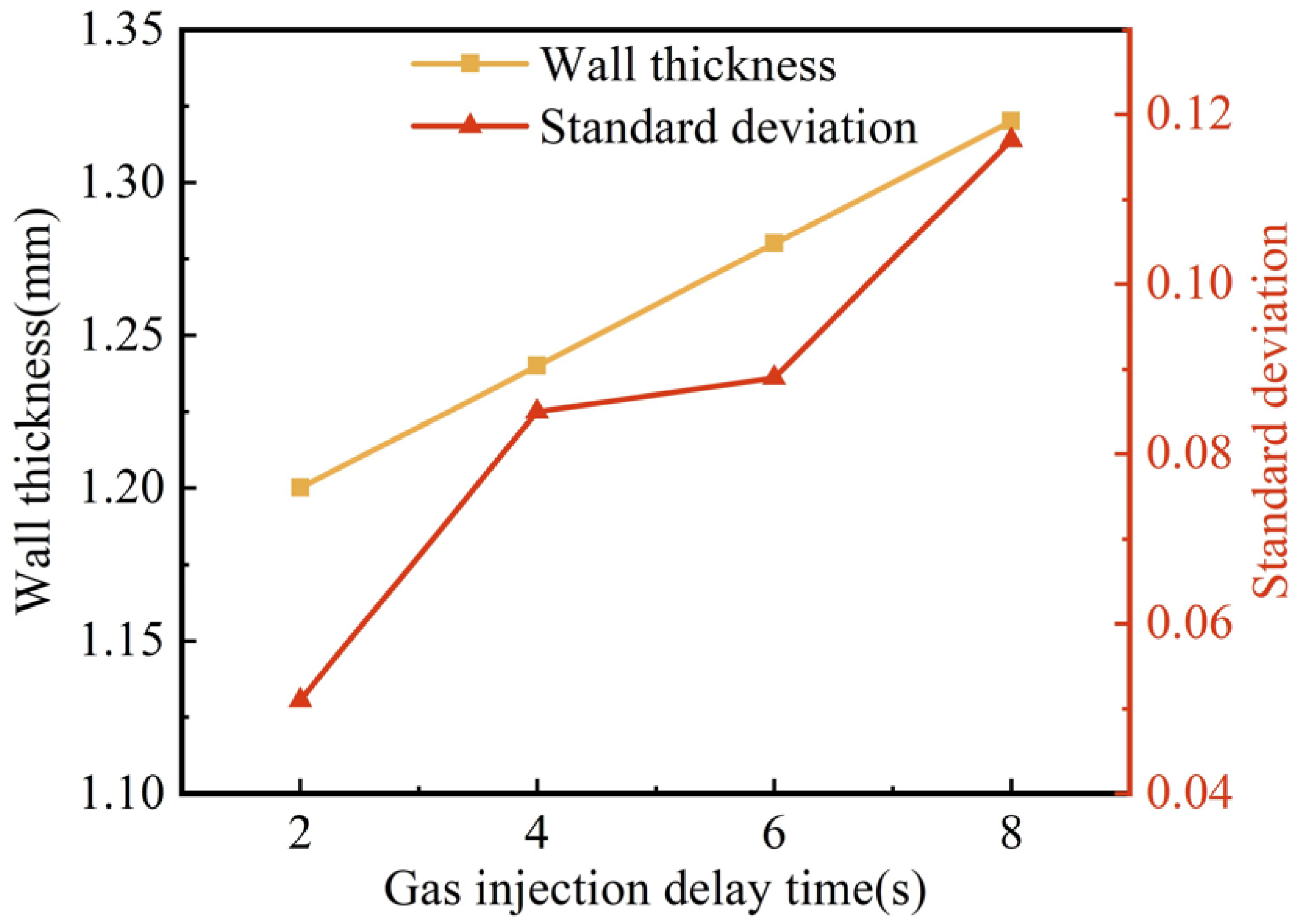


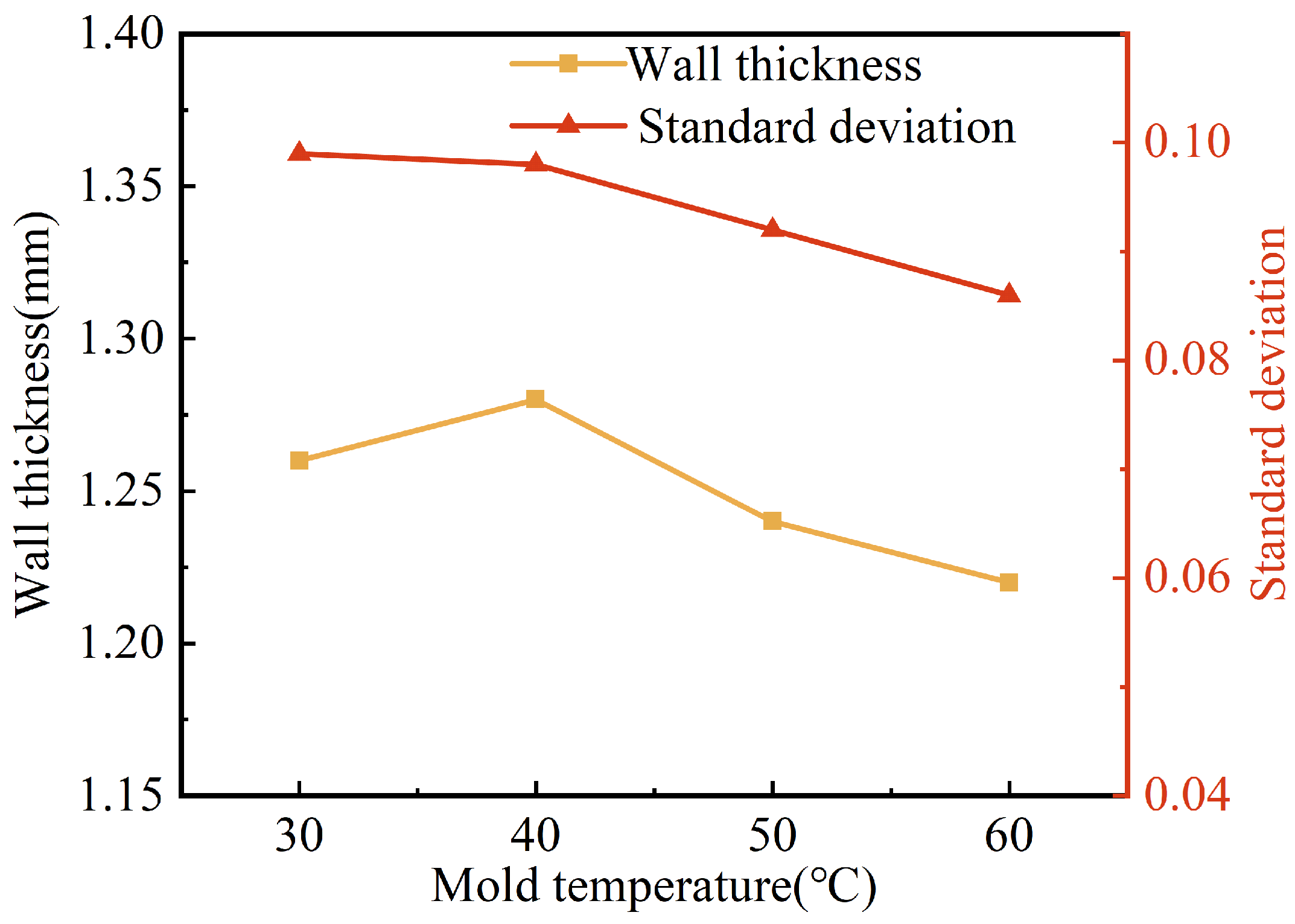
| Processing Parameters | Levels | |||
|---|---|---|---|---|
| 1 | 2 | 3 | 4 | |
| Melt temperature/°C | 210 | (220) | 230 | 240 |
| Gas injection delay time/s | 2 | (4) | 6 | 8 |
| Gas injection pressure/MPa | 4 | (5) | 6 | 7 |
| Melt injection pressure/MPa | 6 | (7) | 8 | 9 |
| Mold temperature/°C | 30 | (40) | 50 | 60 |
Disclaimer/Publisher’s Note: The statements, opinions and data contained in all publications are solely those of the individual author(s) and contributor(s) and not of MDPI and/or the editor(s). MDPI and/or the editor(s) disclaim responsibility for any injury to people or property resulting from any ideas, methods, instructions or products referred to in the content. |
© 2023 by the authors. Licensee MDPI, Basel, Switzerland. This article is an open access article distributed under the terms and conditions of the Creative Commons Attribution (CC BY) license (https://creativecommons.org/licenses/by/4.0/).
Share and Cite
Kuang, T.; Wang, J.; Liu, H.; Yuan, Z. Effects of Processing Method and Parameters on the Wall Thickness of Gas-Projectile-Assisted Injection Molding Pipes. Polymers 2023, 15, 1985. https://doi.org/10.3390/polym15091985
Kuang T, Wang J, Liu H, Yuan Z. Effects of Processing Method and Parameters on the Wall Thickness of Gas-Projectile-Assisted Injection Molding Pipes. Polymers. 2023; 15(9):1985. https://doi.org/10.3390/polym15091985
Chicago/Turabian StyleKuang, Tangqing, Jiamin Wang, Hesheng Liu, and Zhihuan Yuan. 2023. "Effects of Processing Method and Parameters on the Wall Thickness of Gas-Projectile-Assisted Injection Molding Pipes" Polymers 15, no. 9: 1985. https://doi.org/10.3390/polym15091985
APA StyleKuang, T., Wang, J., Liu, H., & Yuan, Z. (2023). Effects of Processing Method and Parameters on the Wall Thickness of Gas-Projectile-Assisted Injection Molding Pipes. Polymers, 15(9), 1985. https://doi.org/10.3390/polym15091985





